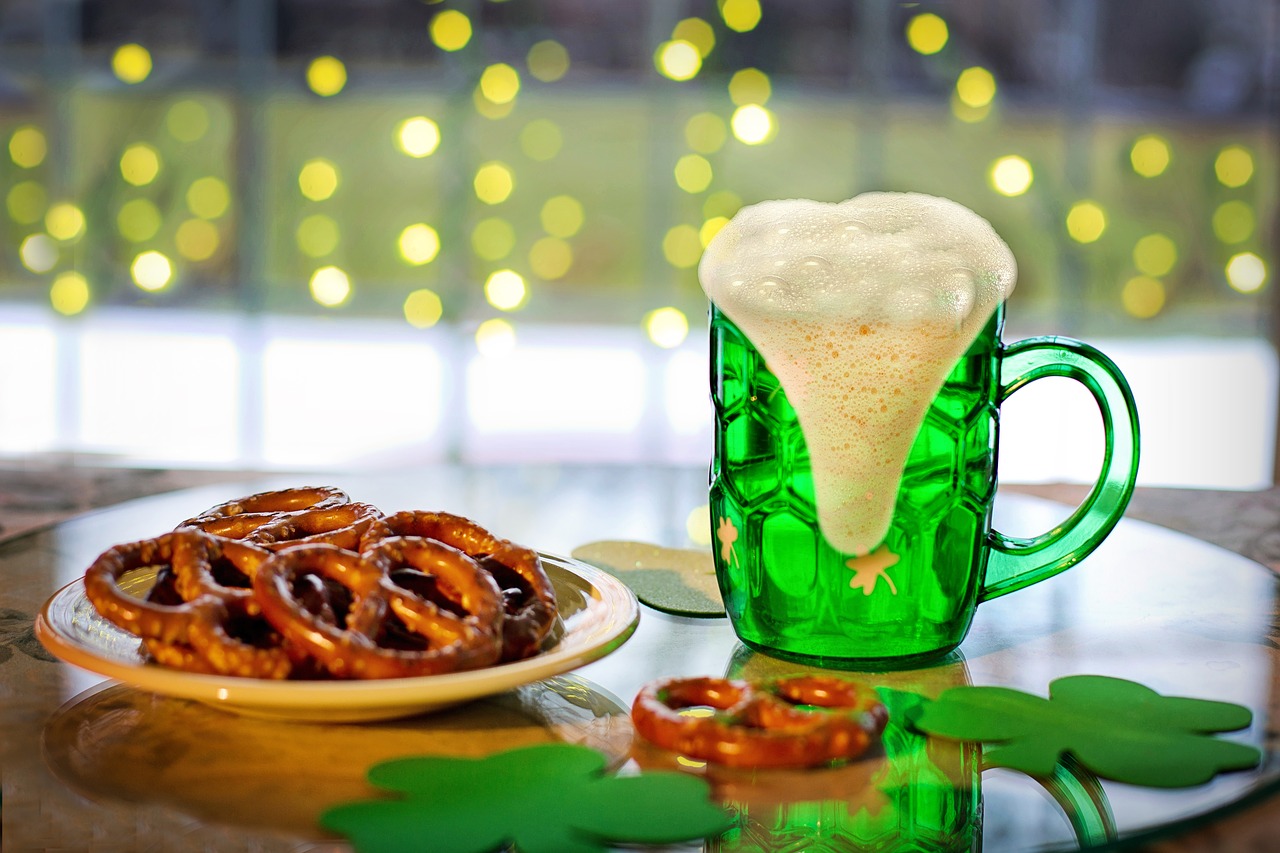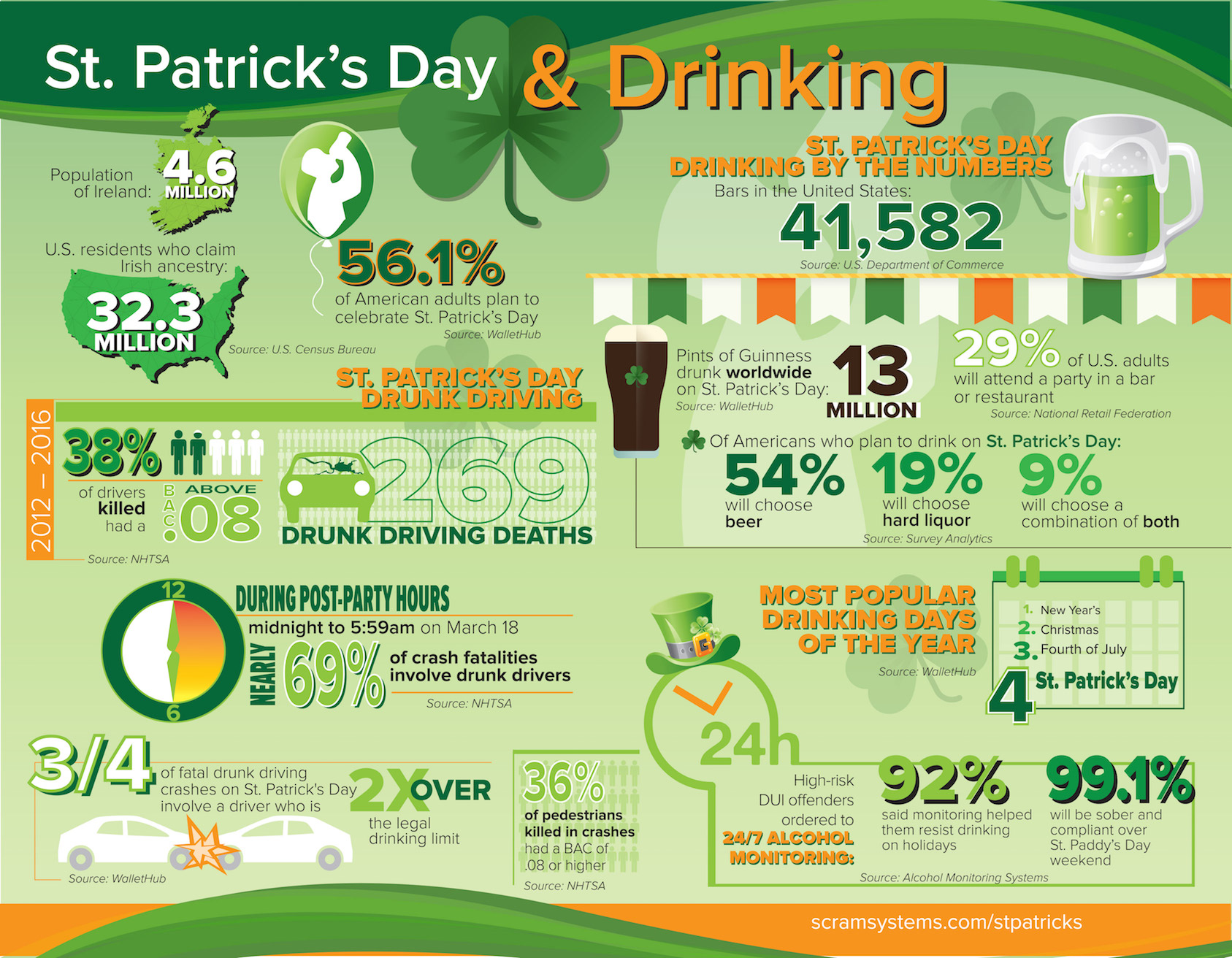St. Patrick’s Day Celebrations
Following the Super Bowl and Valentine’s Day but before April showers and May flowers, there is March. As spring theoretically starts, it often still feels like a time to ward off late winter. Therefore, what better time to celebrate the coming greenery than St. Patrick’s Day. The Roman Catholic feast day of Ireland’s patron saint has become a holiday to wear green clothes, pin “Kiss Me, I’m Irish” buttons on, dye the Chicago River green or have a parade. Corned beef, cabbage and Irish Soda Bread are on the menu as well as 13 million pints of Guinness served worldwide to celebrate.
It is the last celebratory point, which includes alcohol, that can potentially lead to problems. St. Patrick’s Day is the fourth most popular drinking holiday, following New Year’s Eve, Christmas and the Fourth of July. Thirty-seven million Americans will celebrate at a bar or restaurant and spend an average of $36.52. Sadly, every 46 minutes an alcohol-related accident claims a life on St. Patrick’s Day. Approximately 269 people died in drunk-driving accidents on St. Patrick’s weekends between 2012 – 2016. During the holiday, 69% of fatal car crashes involved a driver two times over the legal drinking limit.
Dangers Of Excessive Drinking
The term for drinking alcohol to excess on one day or a holiday is called binge drinking. Binge Drinking is defined by the National Institute on Alcohol Abuse and Alcoholism (NIAAA) as a pattern of drinking that brings a person’s blood alcohol concentration (BAC) to 0.08 grams percent or above. For men, this consists of five drinks or more in two hours; for women, four drinks or more within two hours. Even when binge drinking occurs infrequently, such as on holidays, it can have long-term health effects.
The Centers for Disease Control and Prevention (CDC) reports that binge drinking is associated with many health problems, including unintentional injuries (e.g., car crashes, falls, burns, drowning), intentional injuries (e.g., firearm injuries, sexual assault, domestic violence), sexually transmitted diseases, high blood pressure, stroke and other cardiovascular diseases, liver disease and neurological damage. There are also the immediate dangers of alcohol poisoning or driving under the influence.
According to the CDC, drinking too much, including binge drinking costs everyone. In 2010, excessive drinking cost the United States $249 billion, or $2.05 a drink. These costs resulted from losses in workplace productivity, health care expenditures, criminal justice costs, and other expenses. Binge drinking was responsible for 77% of these costs, or $191 billion.
If individuals feel that they are drinking in excess, there are resources they can access for support and help. Many workplaces have an EAP in place, which is a resource that was founded to support substance abuse problems in the workplace. The workplace’s EAP will be able to offer counseling and support by a licensed individual. Additional suggestions can be found in the Harvard Health Article “11 Ways To Curb Your Drinking.” Suggestions include drinking slowly, watching for peer pressure and asking for support.
St Patrick’s Day is a great opportunity to celebrate the coming Spring but be sure to celebrate responsibly. Happy St. Patrick’s Day and may your holiday be full of Irish culture with parades, special foods, music, dancing, and a whole lot of green.



